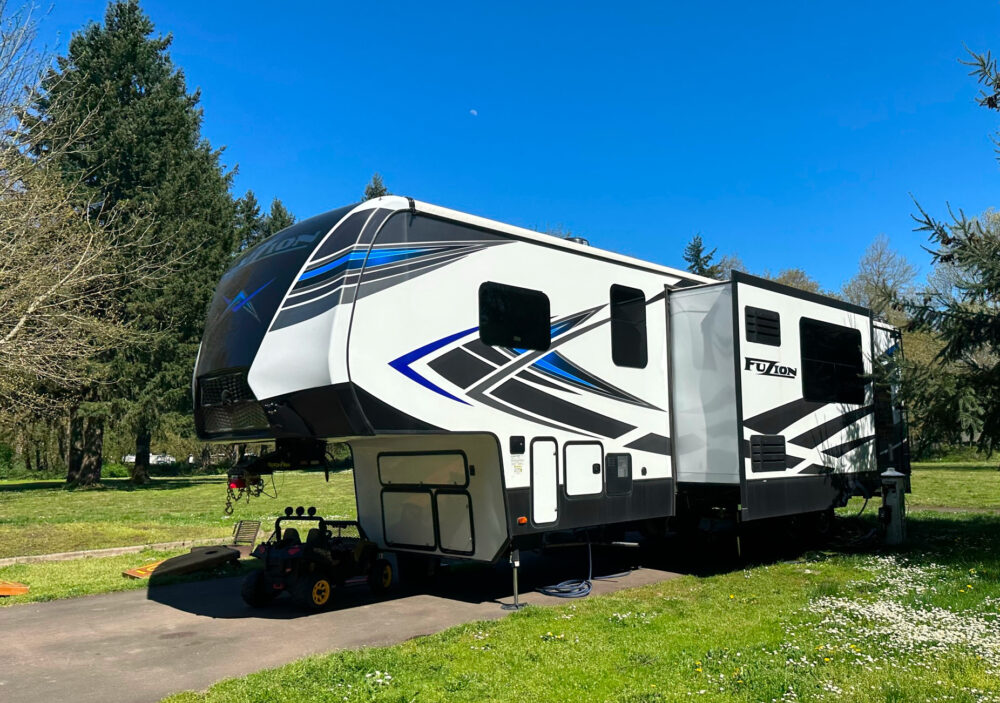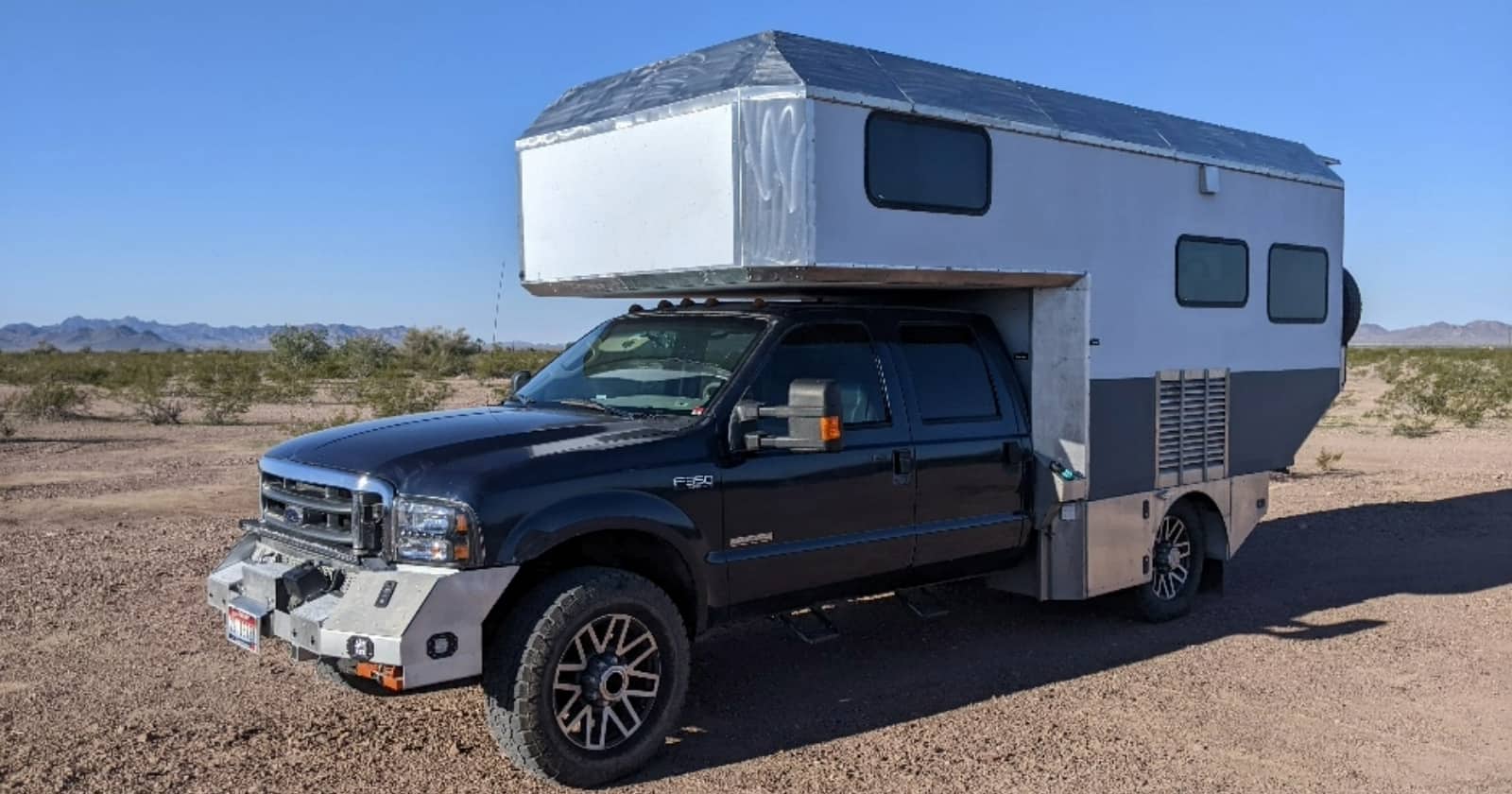
RV Maintenance Mistakes That Can Be Costly
Traveling in an RV offers unparalleled freedom, but maintaining the RV can be a challenge. RVs have unique needs, and overlooking specific aspects can lead to costly problems. Here are some specific RV maintenance mistakes and how to avoid them.
1. Using Automotive Products on RV Exteriors
The mistake: Using regular car wax or cleaning products on the RV’s exterior.
The impact: RV exteriors, especially those with fiberglass, may react negatively to products designed for cars, leading to discoloration or damage.
The solution: Always use products specifically designed for RV exteriors. They cater to the unique materials used in RV construction.
2. Failing to Rotate Tires Regularly
The mistake: Not rotating the tires on the RV as per recommended intervals.
The impact: Uneven tire wear can develop, leading to reduced tire lifespan, poor gas mileage, and even potential blowouts.
The solution: Rotate your RV’s tires based on the manufacturer’s recommendation or at least once every year to ensure even wear and extend their life.
3. Flushing Anything and Everything Down the Toilet
The mistake: Treating the RV toilet like a regular home toilet.
The impact: Non-RV friendly items can clog the waste system, cause odors, or damage waste holding tanks.
The solution: Use RV-specific toilet paper and avoid flushing anything that won’t easily break down.
4. Letting Slide-Outs Go Unlubricated
The mistake: Not lubricating the slide-outs regularly.
The impact: Slide-outs can become jammed or misaligned, making them difficult to use or leading to potential leaks.
The solution: Regularly clean and lubricate slide-out rails and seals with products designed for RVs.
5. Mixing Different Types of Coolants
The mistake: Adding a different type of coolant to the existing one without flushing the system.
The impact: Mixing can cause the coolant to gel, impairing circulation and possibly leading to engine overheating.
The solution: Always use the type of coolant recommended by the RV manufacturer, and if switching types, flush the system first.
6. Not Testing Propane Systems for Leaks
The mistake: Assuming the propane system is always in good condition.
The impact: Undetected leaks pose a fire risk and can be hazardous to health.
The solution: Regularly check connections and hoses. Use a soapy water solution to detect leaks by spotting bubbles at the leak source.
7. Using Non-RV Specific Replacement Parts
The mistake: Installing or replacing parts with generic or non-RV specific components.
The impact: Components not designed for the unique needs and stresses of RVs may fail prematurely, not fit correctly, or even cause damage to other systems.
Example: A common mistake is using a standard residential faucet as a replacement in an RV bathroom or kitchen. While it might fit and function initially, residential faucets are not designed to withstand the constant movement and vibrations of an RV. Over time, this can lead to leaks, malfunction, or even breakage, which can result in water damage to the RV’s interiors.
The solution: Always opt for replacement parts specifically designed for RVs. Ensure compatibility and durability by consulting with manufacturers or trusted RV service centers when seeking replacements.
8. Not Protecting Tires from Sun Exposure
The mistake: Parking the RV for extended periods without shielding the tires from direct sunlight.
The impact: UV rays can degrade rubber, leading to premature tire aging and potential blowouts.
The solution: Use tire covers or UV-protectant sprays when parking your RV for long durations.
9. Improperly Dumping Tanks
The mistake: Emptying black and gray tanks simultaneously or in the wrong order.
The impact: Waste residues can accumulate, leading to odors and blockages.
The solution: Always dump the black tank first, followed by the gray tank, ensuring proper flushing and cleaning of the system.
10. Ignoring RV Awning Care
The mistake: Leaving awnings extended during storms or not cleaning them regularly.
The impact: Awnings can become damaged, torn, or mildewed.
The solution: Retract awnings in strong wind or rain and clean them using specific RV awning cleaners to prevent mold and mildew buildup.
By avoiding these specific maintenance mistakes, RV enthusiasts can ensure a smoother, safer, and more enjoyable journey on the open road. Regular maintenance not only enhances the life of your RV but also ensures your travels are uninterrupted by avoidable issues.
Track your RV maintenance
Make sure you keep track of all your RV maintenance and repairs with an online tool such as RV LIFE Maintenance. Not only can you keep all of your documents in one place, but you’ll also receive timely reminders when maintenance is due to help you avoid costly repairs and potentially serious accidents.




1. USING AUTOMOTIVE PRODUCTS ON RV EXTERIORS: It would help if you could give us some suggestions concerning what products you do recommend using on RV exteriors.
Thanks, always helpful. Anything on fading exterior. Replacing decals?
We are on our 4th RV in over 30 years of RVing
While I agree with most of your advice, I disagree with a couple of points.
While fiberglass products designed for boats and RVs are useful, I have found they are d xpensive and no more effective. I also have owned six boats. remember full paint RVs are hyped as high end auto finishes with multiple clear coats.. So protecting the clear coat is the priority. Good quality clear coat sealers. protectants, and ceramic sealers are best. I have found the 303 protestants work well also.
Unless you drive your RV 10,000s of miles RV tire tread does not wear out. Age is the determining factor. I always replace at 5-6 years old. Rotating is not necessary. A national truck fleet manager gave me this advice. Yes, tire inspection for uneven wear and inflation pressures are the most important maintenance.
Happy RVing